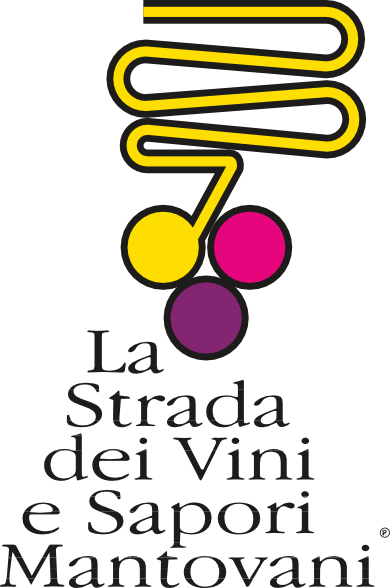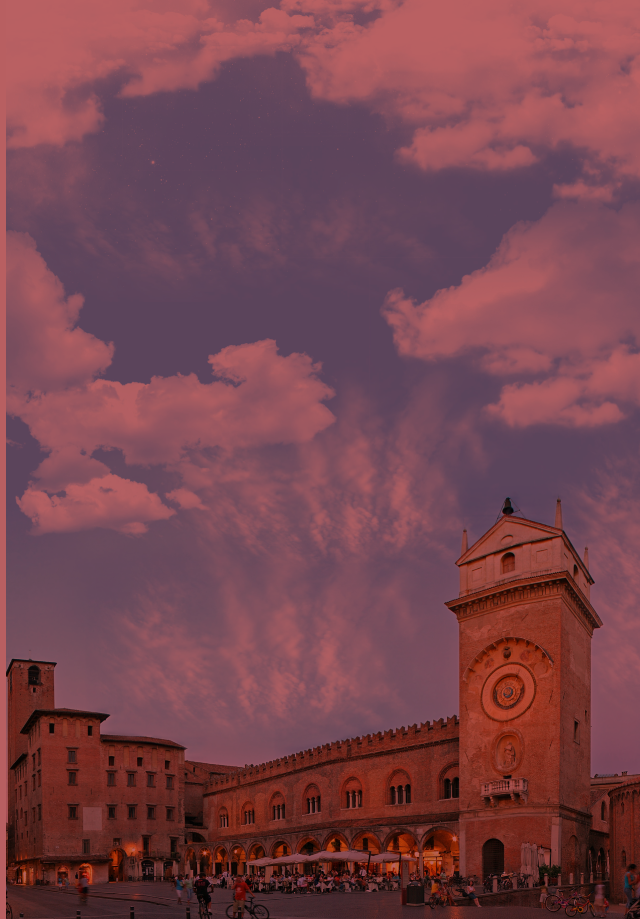L’OLTREPÒ MANTOVANO 2
The Matildic parishes
45% Culture | 35% Nature | 20% Gastronomy
QUISTELLO / QUINGENTOLE / REVERE DI BORGO MANTOVANO /
Culture
45
Food and wine
20
Nature
35
Itinerary description
The strong devotion that shaped the life of Countess Matilde di Canossa was not only reflected in her personal and political journey but also in the flourishing of churches, monasteries, and places of worship across the vast territories she administered.
This precious legacy has been preserved over time and can now be explored through a short yet intense itinerary in the Oltrepò Mantovano region.
The journey begins in Nuvolato, a hamlet of Quistello. Archaeological excavations in this area have revealed a pre-Roman past, while the Church of San Fiorentino stands as a testament to Matilde’s influence. Clearly inspired by Romanesque architecture, this church shares distinct characteristics with other so-called Matildic churches.
Before moving on, we take a step forward in time to the 20th century, discovering the work of Giuseppe Gorni, a renowned artist from Quistello. The Museo Diffuso, housing an extensive collection of his works, is an absolute must-visit.
The route continues to the small village of Quingentole, located along the right bank of the Po River. With an ancient past, Quingentole flourished under the rule of the Gonzaga family. The Gran Casa del Sole, now the town hall, was once the palace of the bishops of Mantua and a private residence of noble families.
The final stop is Revere di Borgo Mantovano, a village of great historical importance, thanks to its strategic position on the Po River.
A former trade and toll route, Revere was part of the Canossa territories until the early 11th century, before being ceded to the Church. The ancient tower is the only remaining structure of the medieval fortress that once defended the village, while the magnificent Ducal Palace is another testament to the Gonzaga family’s lasting influence on this region.
The Mantova Strada Councils
Where
to eat
Ristorante Il Tartufo
Via Guido Rossa 13
46036 Revere di Borgo Mantovano (MN)
Tel. +39 0386 846076
Cell. +39 346 9597210
iltartufo@iltartuforevere.com
www.ristoranteiltartufo.com
Where to
Taste
Cantina Sociale di Quistello
Via Roma, 46
6026 Quistello (MN)
www.cantinasocialequistello.it
Accommodation
facilities
The stages
A small village on the banks of the Secchia River, Quistello boasts an ancient history dating back to the pre-Roman era, as evidenced by archaeological excavations that revealed early settlements.
At the heart of the town, a fortress was constructed around the 10th century AD but was destroyed by the Austrians in the 18th century when the region was annexed to the Habsburg Empire.
In the hamlet of Nuvolato, one finds the beautiful Romanesque Church of San Fiorentino, built in the 11th century AD by Matilde di Canossa.
Originally designed as a single-nave church with three apses, it was later expanded in the 18th century with the addition of two side aisles, while two of the apses were demolished to make way for the bell tower and sacristy.
Inside, visitors can admire 15th- and 16th-century frescoes.
Quistello is also the birthplace of Giuseppe Gorni, a multifaceted artist and World War veteran whose artistic career flourished in the early 20th century. His murals, which still adorn several buildings in the town, are well-preserved. The Museo Diffuso exhibits a wide collection of his drawings, engravings, and sculptures.
Nature lovers can explore the Parco delle Golene Foce Secchia, a protected area that follows the final stretch of the Secchia River before it meets the Po River. The trail network connects several points of interest, including the Church of San Fiorentino and the Museo Diffuso Gorni.
Quistello is also known for its local delicacies, two of which hold De.Co. (Denominazione Comunale) recognition:
- Vin Còt – a Lambrusco-based condiment, perfect for meats and salads.
- Zucca di Quistello – a rare and prized pumpkin variety, also known as Capèl da Pret.
Nestled along the Po River, Quingentole centers around its historic core, identified with Piazza Italia, where the Gran Casa del Sole stands.
Now serving as the town hall, this elegant building was originally the palace of the bishops of Mantua, built in the 15th century AD by Lodovico Gonzaga.
The villa hosted several bishops, including Ercole Gonzaga, a descendant of Lodovico, who expanded and adorned the structure. He is credited with designing the gardens and commissioning Renaissance artist Giulio Romano to decorate the interiors.
Across the square, visitors will find the beautiful Baroque Church of San Lorenzo Martire, built in the mid-18th century by order of Bishop Antonio di Bagno to replace the previous parish church, which was located outside the village.
This imposing structure features a single nave, four side chapels, a presbytery, and an apse, complemented by a 38-meter-high bell tower.
Also of great historical interest is the Oratory of the Blessed Virgin of Loreto, located in the hamlet of San Lorenzo.
It was built to replace the ancient Matildic parish church, demolished in the 18th century, with some of its materials being repurposed for the new Church of San Lorenzo Martire.
Excavations around the oratory have revealed the perimeter walls of the previous church, allowing historians to study and identify its structure.
Now part of a municipal union, Revere holds a rich and ancient history, thanks to its strategic location along the Po River and the historic Via Claudia Augusta.
The Canossa family controlled these territories in the early 11th century, before ceding them to the Church. The village then changed hands several times due to conflicts between Modena, Reggio, and Mantua, ultimately falling to the Mantuans in the 12th century.
It was during this period that the castle was built, of which only the imposing tower remains today.
Not far from the tower, the Ducal Palace showcases the influence of the Gonzaga family, who took control of the village in the 14th century.
This magnificent square-plan palace, featuring a porticoed courtyard on three sides, was designed by Luca Fancelli, a pupil of Filippo Brunelleschi.
Today, it houses the Museum of the Po, an engaging exhibit across eleven rooms, illustrating the history of the great river, its surrounding landscapes, the people who lived along its banks, and its rich wildlife.
The village tour concludes with a visit to the Church of the Blessed Virgin Annunziata, built in the late 18th century.
It stands out for its curved late-Baroque facade and its single-nave interior, decorated with frescoes by Giuseppe Milani and Giuseppe Bazzani.
©2012 – 2022 Strada dei Vini e Sapori Mantovani | C.F. 93035440200 – P.IVA 02119480206 | Privacy Policy | Cookie Policy


